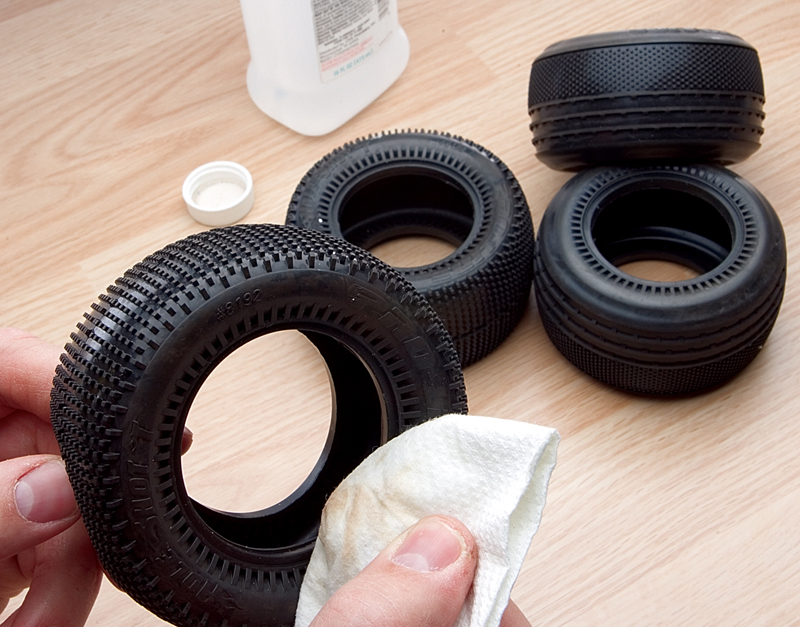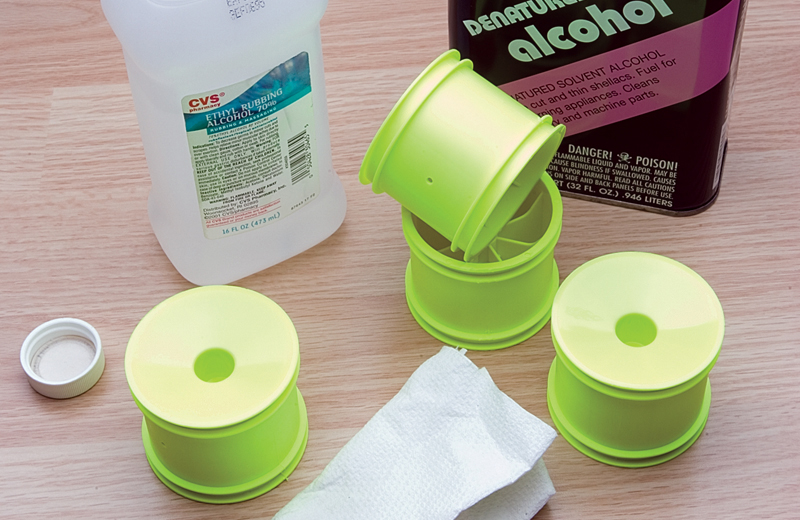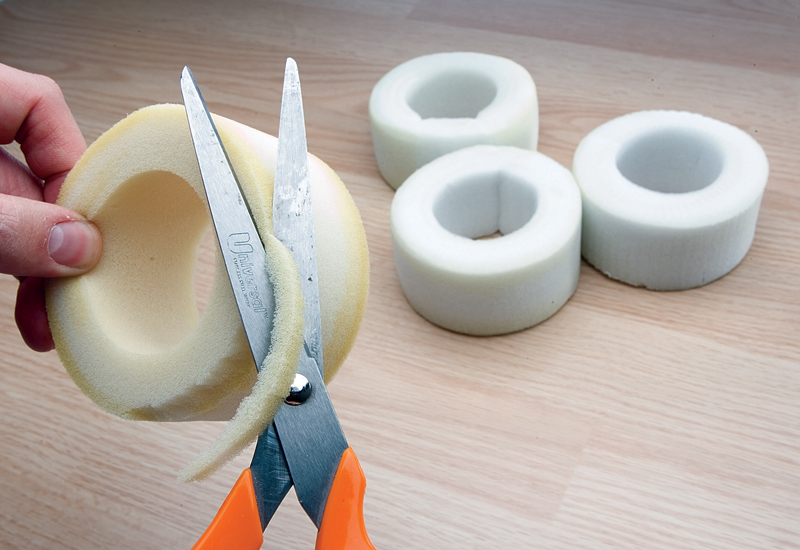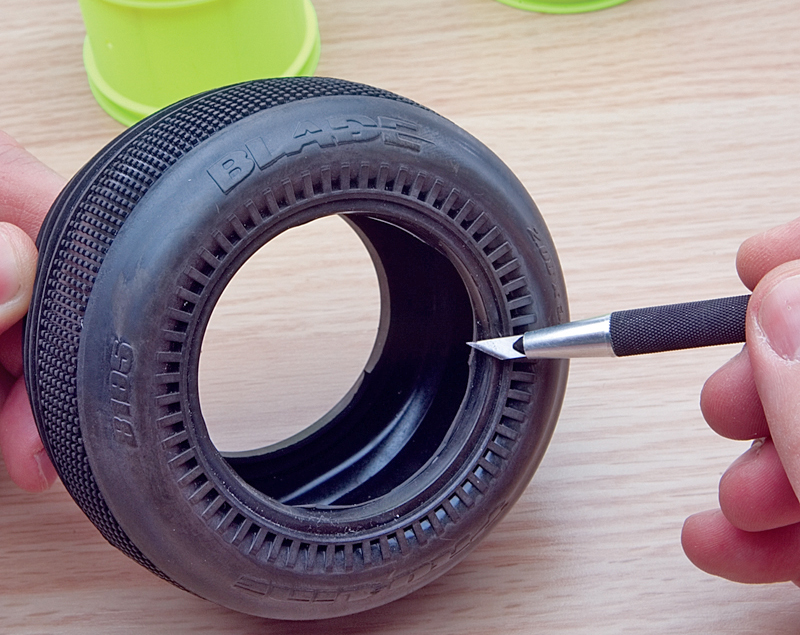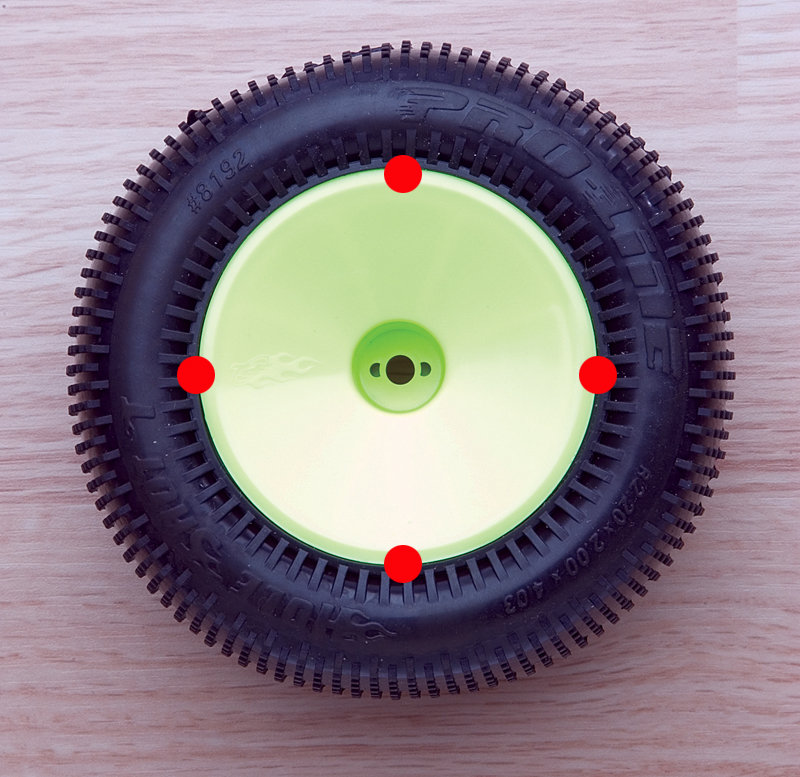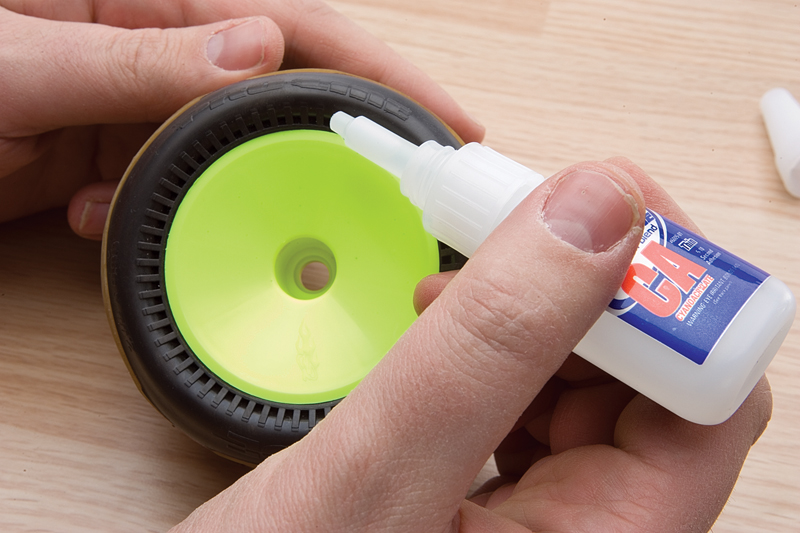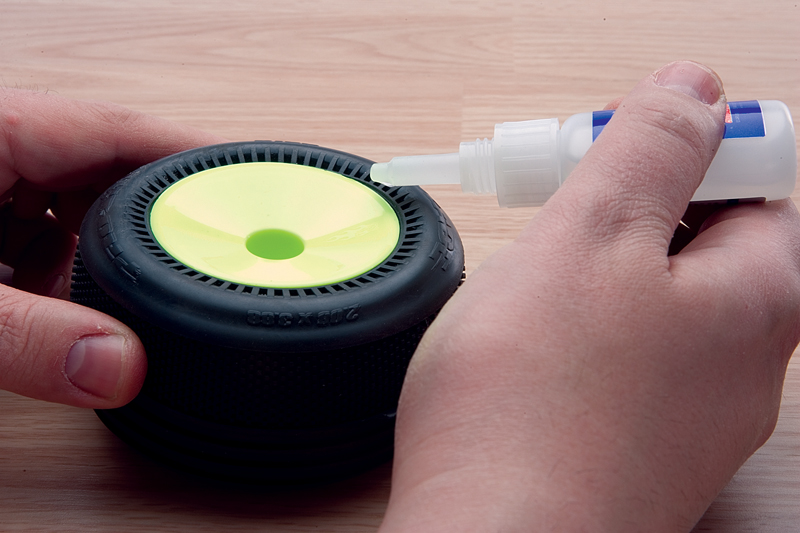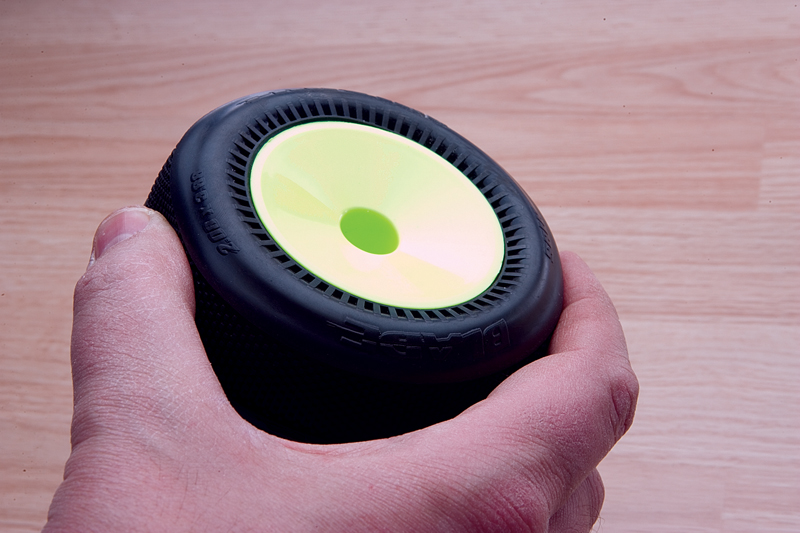There’s an old saying in racing: “To finish first, you must first finish.” There are many reasons why unfortunate souls go home each weekend with the dreaded DNF instead of the hardware, but one common gremlin, especially when racing off-road, is the old wobbly tire. Inevitably, it’s always a rear tire that has come unglued about halfway through the race and left the driver stranded as he was no doubt having the run of a lifetime. How does this happen, and happen so often, when using glue is hardly rocket science? Tires (especially rear tires) are subjected to extremely high side-load pressure, and that force makes quick work of weak glue bonds between tires and rims. Follow these steps to stuck-tire success, and your race machine or backyard bomber will never get a “flat” again.
Step 1: Prep the bonding areas
Proper prep is essential to stuck-tire success. Tires and rims are molded parts and coated with a slick mold-release agent left over after the manufacturing process. To get them ready for gluing, all you need is some denatured or isopropyl (rubbing) alcohol. You can find the stuff at any pharmacy or department store, and as a bonus, it’s cheap. Other cleaners such as motor spray and nitro and brake cleaner may leave a residue that might prevent a strong bond. Use a paper towel and wipe the tires’ beads down until the towel stops picking up residue. Thoroughly clean the rims’ mounting channels, too. If you run on an extremely high-traction surface, you might even lightly sand the mounting surfaces on the rim and tire before cleaning them with alcohol. They will then bond very tightly.
Step 2: Test-fit
Now’s the time to trim the foam insert. Most people trim the outer and inner edges, but the current hot setup is to use full, untrimmed inserts. Most stock foam inserts are so soft that trimming them does nothing. It’s much more important to make sure that the insert is centered in the tire and that the tire is fully seated. It isn’t crucial to mount an off-road tire on a balancer, but you should make sure that it doesn’t wobble when you spin it or have any bulges. If the tire does not seat properly, look for flashing on the rim and the tire, and trim it away with a hobby knife. When you’re satisfied with your test-fit, run a rubber band around the edges of the tire to squeeze it tightly to the rim.
Step 3: Start gluing
Pull the tire sidewall just far enough away from the rim to allow the glue to reach the bottom of the tire-mounting channel; then put a drop of glue into the channel. Let the tire settle back in and seat the bead, and then repeat. Picture the rim as the face of a clock, and glue it at 12 and 6. Let that dry for a second and glue at 3 and 9. (If you can tell the time only on a digital clock, you probably just made a big mess.)
When it comes to tire glue, less is more. Thick spots of tire glue are brittle, and your tires will be much more likely to break free if you use too much glue. After you’ve finished one side, wait a few minutes, and then flip the tire over and do the other side.
Step 4: Sidewall insurance
Gently tug on the tire’s sidewall to check for loose spots, and reglue as needed using only a dab. To seal the bead, place a full drop of glue between the tire and the rim. Tilt and roll the tire a little to spread the glue around the entire bead. This will help to prevent the tire from pulling away from the rim and will prevent dirt from from being packed between the tire and the rim. Make sure the glue has completely dried before you start on the other side. Remember that “dry” and “cured” are different. If you can avoid it, don’t run freshly glued tires.
Forget the Glue
Does all this gluing sound like a hassle? What if you want to switch tires on your big monster? Monster truck rims can get pretty expensive. The answer is bead-lock rims. This style of rim uses technology borrowed from full-size trucks. Actually, the concept is so simple that it’s hard even to call it technology. Instead of using glue, a ring is bolted to the rim and the tire’s bead is squeezed and, in essence, locked in place. Pro-Line Racing, Axial and Maximizer Products make monster truck bead-lock rims for monster trucks in a variety of styles.
The post How To Glue Tires the Right Way appeared first on RC Car Action.

